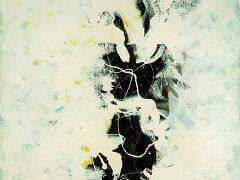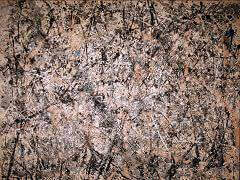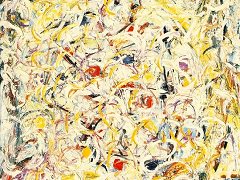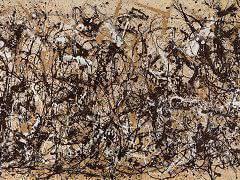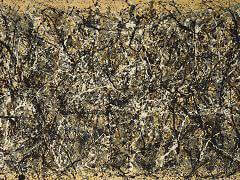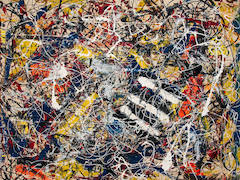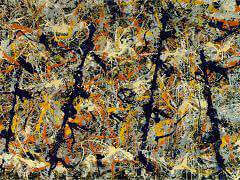Circumcision, by Jackson Pollock
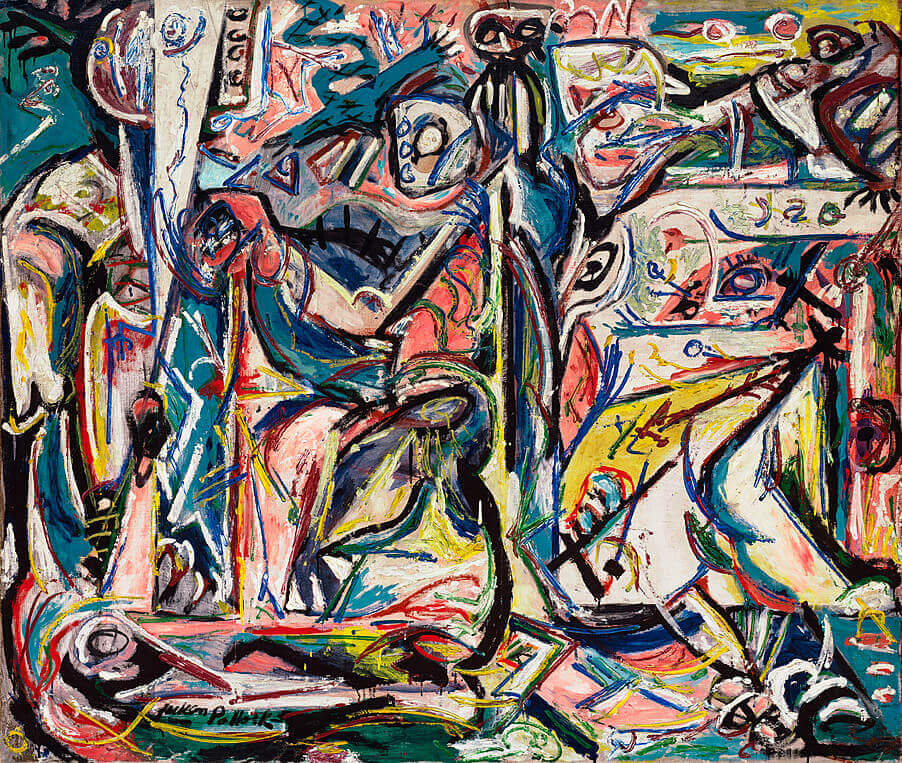
In this transitional work of 1946 the subtle persistence of the Cubist grid system is felt in the panels that organize the composition and orient major pictorial details in vertical or horizontal positions. However, Jackson
Pollock's dependence on Pablo Picasso has virtually dissolved, giving way to a more automatic, fluidly expressive style. Line loses its descriptive function and begins to assume a
self-sufficient role, the rhythm, duration, and direction of each brushstroke responding to the artist's instinctual gesture. The compositional focus is multiplied and decentralized, and areas of intense activity fill the
entire surface. Fragmented figural elements are increasingly integrated into the shallow pictorial space, as background, foreground, and object merge and the texture of the paint gains in importance. By 1945 the vigor and
originality of Pollock's work had prompted the critic Clement Greenberg, one of his earliest champions, to write in The Nation of April 7: "Jackson Pollock's second one-man show at Art of This Century . . . establishes him,
in my opinion, as the strongest painter of his generation and perhaps the greatest one to appear since Joan Miro."
Primitive art forms are alluded to in the crudely drawn arrows, cult and stick figures, and ornamental markings discernable in Circumcision. Totemic figures (the rotund being standing at the left and the owl-like creature
at upper center) are posed stiffly, observing what seems to be a scene of violence in the center of the canvas. The enactment of a rite of passage is suggested, but the visual evidence does not encourage a specific reading.
Pollock's concern with archetypal imagery and pancultural rituals and mythologies is evoked with varying degrees of specificity in his work.
- Painting and quote from Guggenheim



